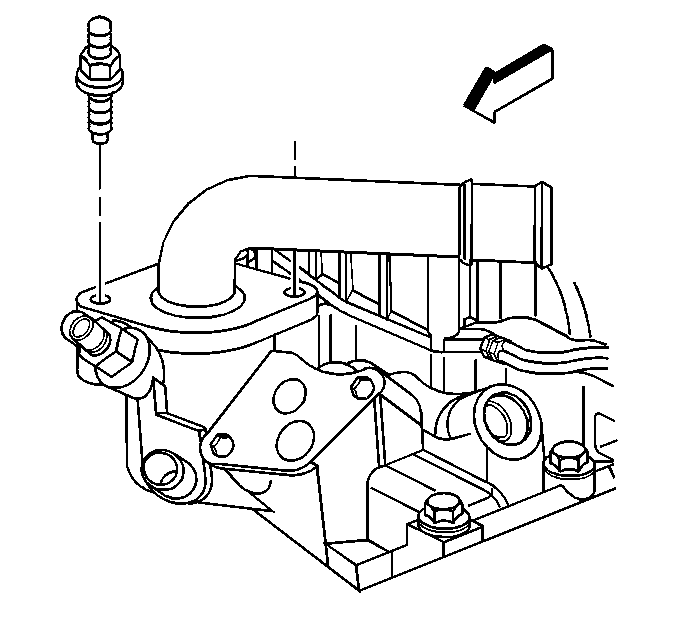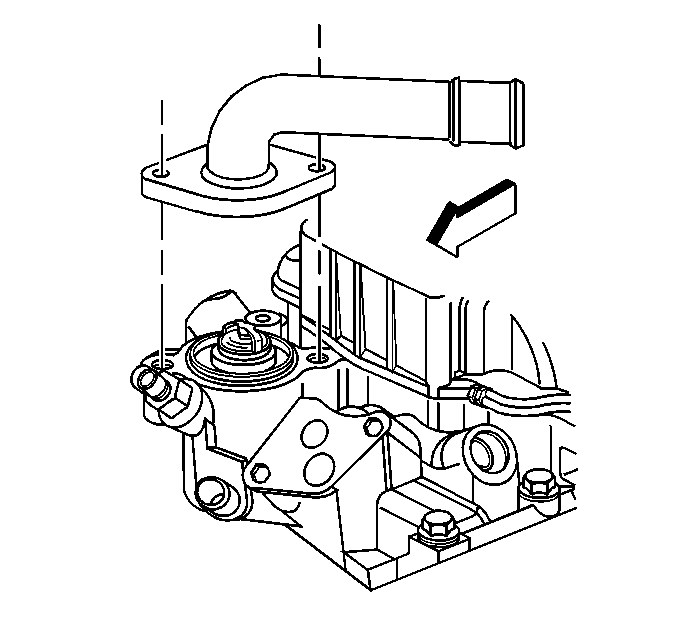Engine Coolant Thermostat Replacement Testing
Thermostat Testing
The coolant thermostat can be tested using a temperature (tempil) stick. The temperature stick is a pencil like device. It has a wax material containing certain chemicals which melt at a given temperature. Temperature sticks can be used to determine a thermostat's operating range, by rubbing 87°C (188°F) and 97°C (206°F) sticks on the thermostat housing. The marks made by the sticks should melt when coolant temperatures of 188°F and 206°F are reached, respectively. These temperatures are the normal operating range of this thermostat, fully opened at 206°F and fully closed below 188°F. Replace the thermostat when it operates outside of this range.
Engine Coolant Thermostat Replacement 4.3L
Removal Procedure
- Remove the necessary coolant from the radiator. Refer to Draining and Filling Cooling System .
- Remove the upper radiator inlet hose.
- Remove the coolant outlet bolts.
- Remove the coolant outlet from the lower intake manifold.
- Remove the thermostat gasket.
- Remove the coolant thermostat.
- Clean all the sealing surfaces of the coolant outlet.
- Clean the sealing surface on the lower intake manifold.
Caution: Do not remove the radiator cap while the cooling system is hot. Serious personal injury may result. Only remove the radiator cap from a cool engine.



Installation Procedure
- Install the coolant thermostat in the lower intake manifold.
- Install a new gasket (if used). Otherwise, place a 3 mm (1/8 in) bead of RTV sealer (GM P/N 1052289, or equivalent) at the groove on the coolant outlet sealing surface.
- Install the coolant outlet on the lower intake manifold.
- Install the attaching bolts.
- Install the radiator inlet hose.
- Fill the cooling system with specified coolant and concentration. Refer to Radiator Replacement .
- Inspect all sealing surfaces for leaks after starting the engine. Refer to Radiator Leak Testing (On and Off Vehicle) .

Important: To prevent leakage, thoroughly clean all parts and sealing surfaces.


Tighten
Tighten coolant outlet bolts to 19 N·m (14 lb ft).
Refer to Fastener Tightening Notice in General Information.
